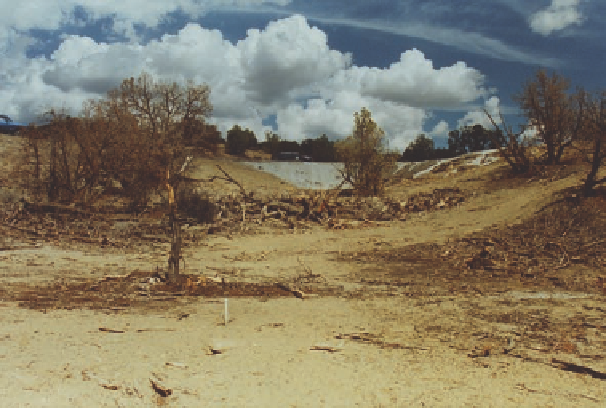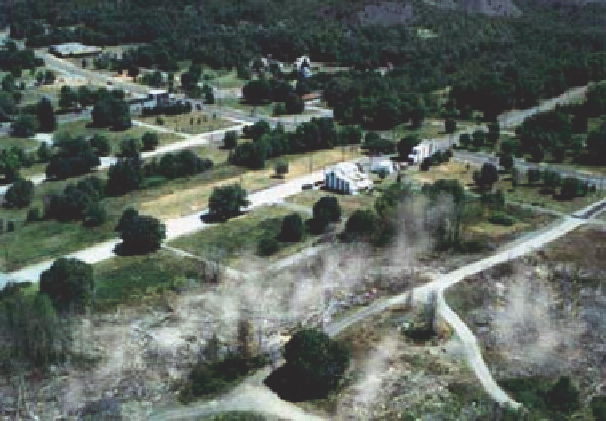Geology Reference
In-Depth Information
Figure 7.1.4. Deforestation and subsidence caused by bituminous coal burning underground in the Late
Cretaceous Fruitland Formation on the Southern Ute Indian Reservation in southwestern Colorado. Photo by
Glenn B. Stracher, 2002
.
Figure 7.1.5. Centralia, Pennsylvania. Barren lots mark the locations where houses once stood. The families were
relocated after all attempts failed to extinguish the coal fire raging beneath the town. Note the emission of toxic
coal-fire gas in the foreground. From Kubiszewski and Cleveland 2006.
cost of land reclamation after a coal fire can be substantial. According to an Internet article by Stein (2007), the
estimated cost of extinguishing just the Centralia Mine Fire in Pennsylvania is in excess of $600 million dollars (US).
Solid By-Products of Combustion
The combustion process mobilizes many elements that were concentrated in the coal. These elements commonly
nucleate as compounds at the surface on rock and soil, dead vegetation, and on all sorts of refuse from masonry
blocks and rubber tires to children
s toys discarded in waste dumps. The compounds, typically minerals and
creosote (coal tar), nucleate when coal fire gas cools and on occasion reacts with the depositional substrate.
Stracher et al. (2005; Chapter 9, this topic) gives detailed explanations of the various processes that lead to the
formation of mineral assemblages.
'


